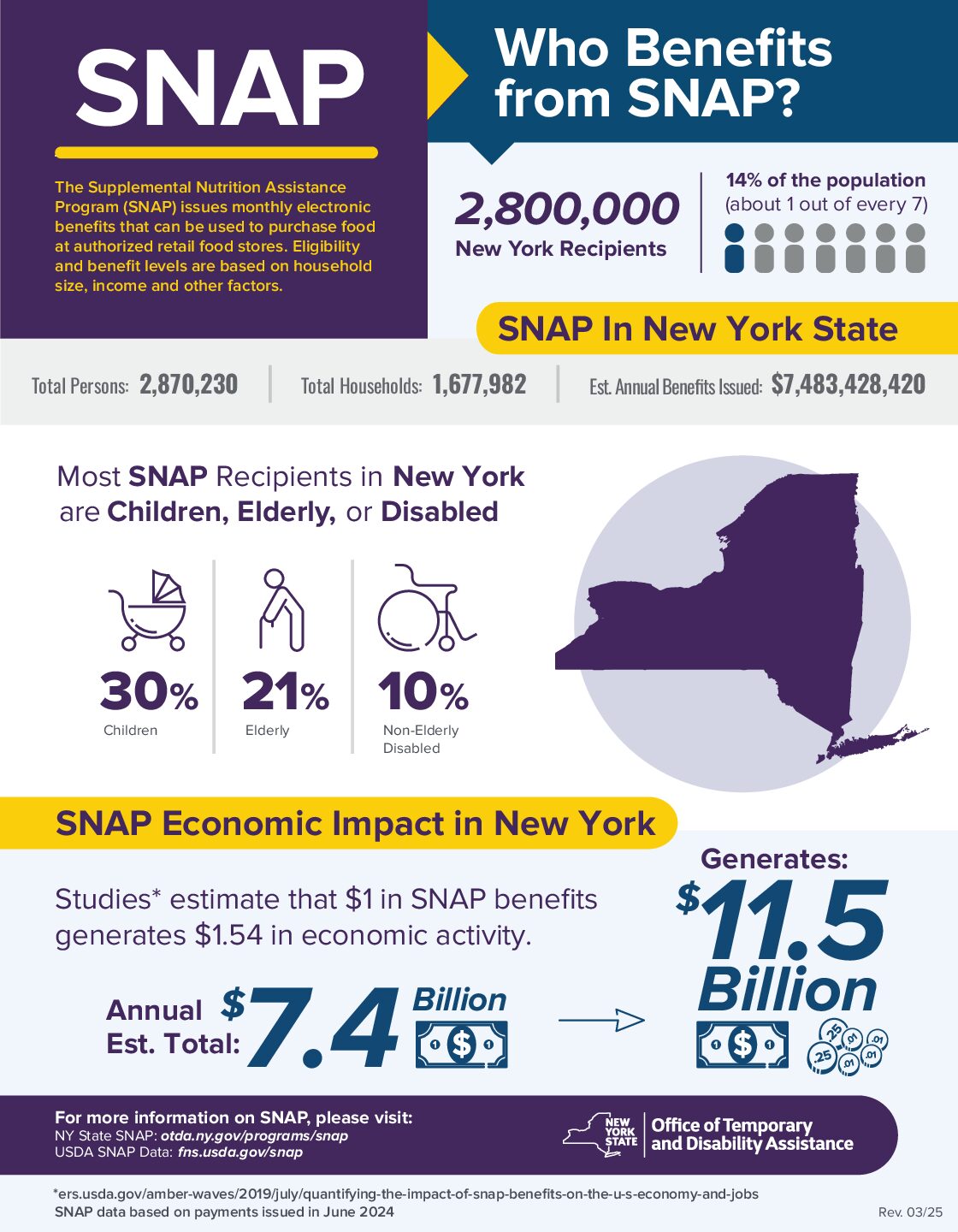The Supplemental Nutrition Assistance Program, better known as SNAP and sometimes as “food stamps,” is at the foundation of America’s food system. Funded federally by the USDA and administered at the state level, nearly one in every seven people in New York state collects SNAP benefits. That is to say, currently 2,870,230 people comprising 1,677,982 households in New York receive money via Electronic Benefits Transfer (EBT) to be spent on food at grocery stores, farmers markets, pharmacies, and corner stores across the state.
Despite the ubiquity of this public program, SNAP benefits are still subject to an unfair and inaccurate stigma that can prevent those who qualify from applying and receiving SNAP, even when experiencing food insecurity. As the federal government considers cutting funding to SNAP and associated food access initiatives, we feel it is important to highlight the diversity of SNAP recipients and the essential nature of the program, in hopes of dispelling the lasting stigma of receiving public assistance and demonstrating the necessity of this program not just for its beneficiaries, but to life in New York as a whole.
30 percent of SNAP recipients are children
One of the most common misconceptions about SNAP benefits is that the program is solely tied to income — that only those whose income sits below the poverty level are entitled to receive those benefits.
This, however, is not exactly true.
SNAP eligibility is determined by the state on the basis of household, not individual income. While total monthly income is often a factor the state uses to assess a household’s eligibility, the maximum eligible income is set to a sliding scale according to household size, meaning that children, more so than any other population in New York, benefit from SNAP.
Students in New York are also eligible for additional SNAP benefits during summer recess, to promote food access and equity when school lunches are not available. Previously, augmented federal funding for the program also made SNAP available to any student enrolled in New York City Public Schools, while schools were closed for the COVID-19 lockdown and school meals were unavailable.
21 percent of SNAP recipients are older adults
Folks over the age of 60 in New York have access to a number of programs and exemptions that ease the income requirement for SNAP benefits. Food insecurity among older adults has consistently risen since 2001, given the challenges that they experience as a result of health complications, limited mobility, social isolation, and life on a fixed income that is often far less than they earned during their working years.
In response, New York State has implemented the Elderly Simplified Application Project (ESAP), which makes the SNAP application better accessible to older adults by streamlining the application process and educating them on existing income exemptions for older adults. In addition, seniors additionally can deduct medical expenses from their total earned income when applying for SNAP, and those collecting Social Security can also enroll to automatically receive SNAP.
9 percent of SNAP recipients are disabled New Yorkers
While New York City provides numerous legal protections and requires reasonable accommodations for disabled New Yorkers, life with a disability is, by definition, more difficult than life without one, and people with disabilities experience disproportionately more food insecurity than other city residents.
The State offers additional accommodations to New Yorkers with disabilities, including priority appointments with state officials to reduce travel and wait time, home visits, and assistance in completing SNAP applications. New Yorkers with disabilities are also included in many of the income exemptions that older New Yorkers are entitled to. These are essential programs. Across the city, 40.8 percent of disabled New Yorkers are enrolled in SNAP, compared to the 28.9 percent of disabled people enrolled nationally.
Should disabled New Yorkers, children, and the elderly lose access to these programs, our already worsening food crisis will only continue to grow.


